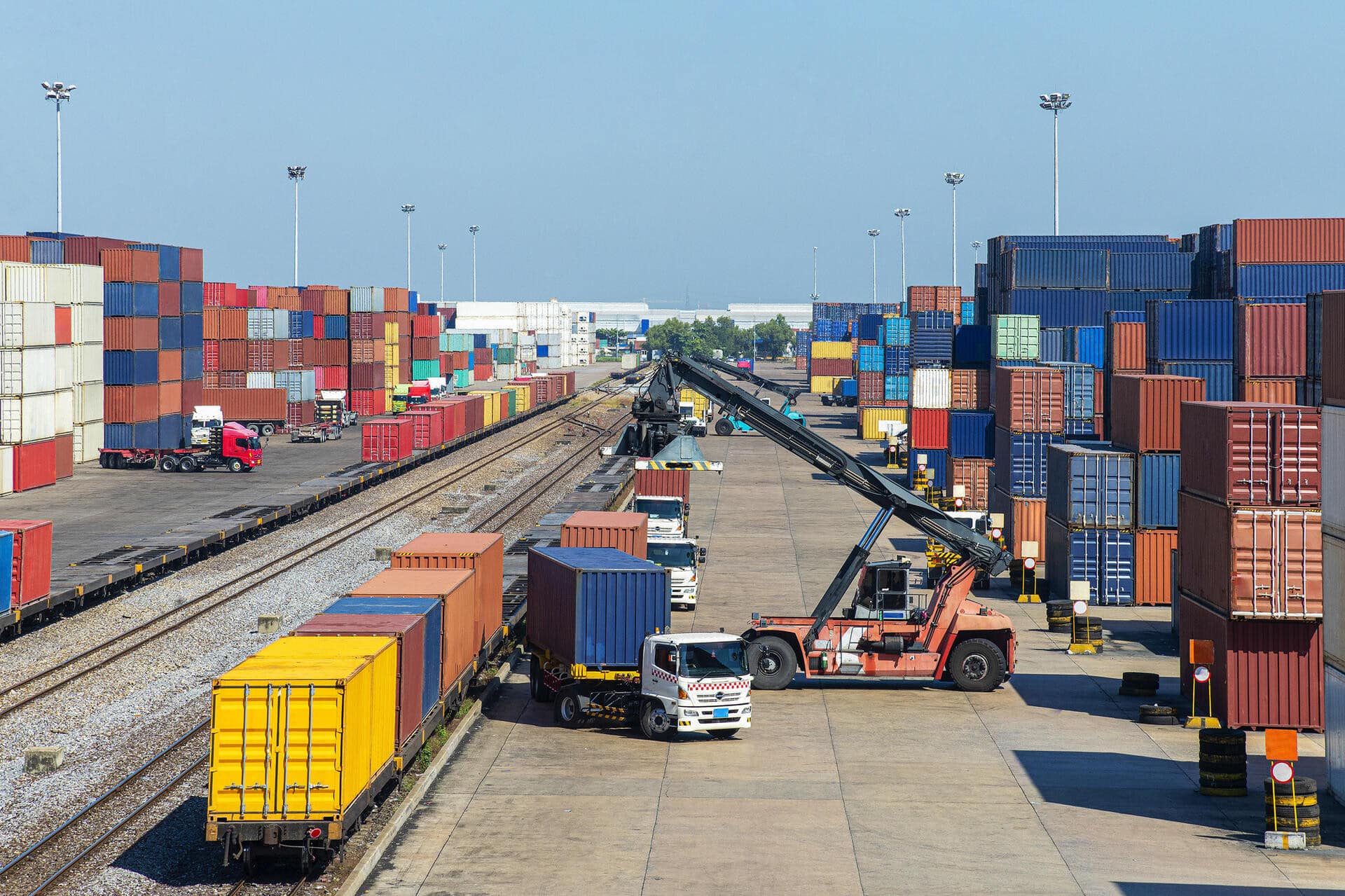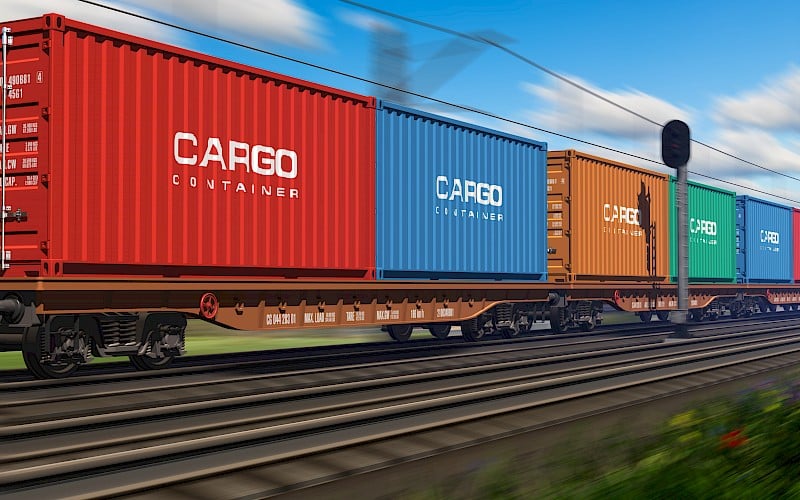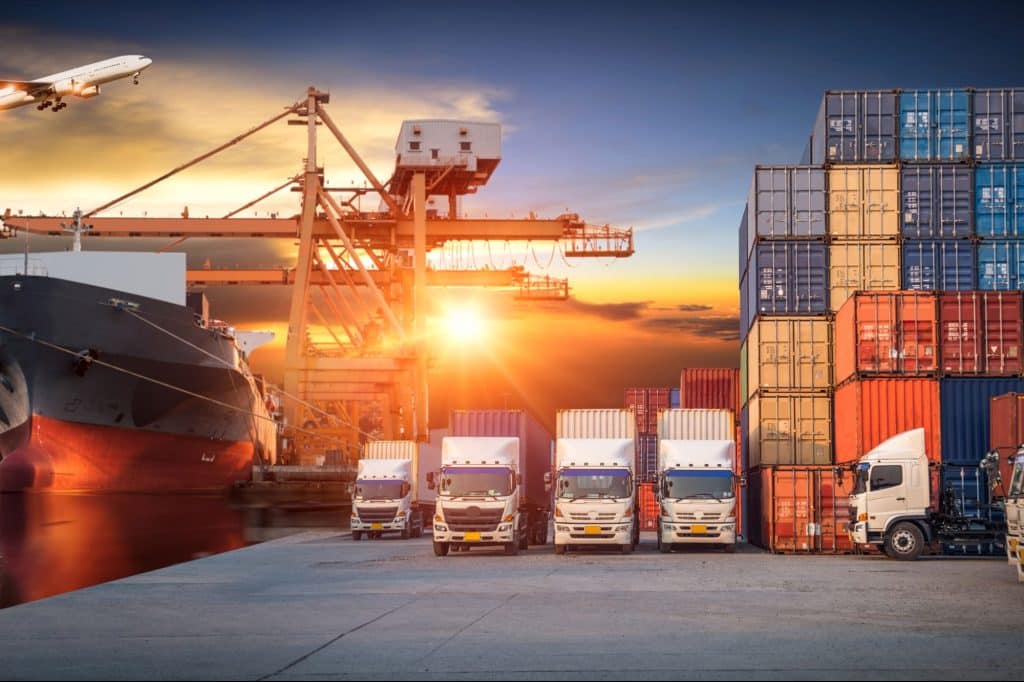What Size Are Shipping Containers (Detailed Guide)
Shipping containers come in various sizes to accommodate diverse transportation and storage needs. The size of a shipping container refers to its external dimensions and capacity. Standard shipping containers typically come in two popular sizes: 20 feet and 40 feet in length. These containers are commonly used across the globe and have become the industry standard for transporting goods. The 20-foot container provides approximately 1,172 cubic feet of storage space, while the 40-foot container offers around 2,390 cubic feet.
In addition to the standard sizes, there are also smaller and larger options available to cater to specific requirements. Smaller containers, such as 10 feet in length, are suitable for limited cargo or when space is a constraint. On the other end of the spectrum, larger containers like 45 feet or 53 feet may be utilized for oversized cargo or to maximize shipping capacity.
It’s important to note that these container sizes are external dimensions, and the internal dimensions may vary due to wall thickness. The internal dimensions can be slightly smaller than the external dimensions, reducing the available storage space by a few inches or centimeters.
Understanding the sizes of shipping containers is crucial when planning logistics operations, determining storage requirements, and calculating cargo capacities. By selecting the appropriate container size, businesses and individuals can optimize their transportation and storage operations, ensuring efficient use of space while maintaining the integrity and safety of their goods.
Popular Shipping Containers Types and Sizes
Shipping containers play a crucial role in global trade and logistics, providing a reliable and efficient means of transporting goods across the world. With their versatility and robust construction, these containers come in various types and sizes to meet different shipping and storage needs. In this article, we will explore the popular shipping container types and sizes, highlighting their unique features and applications.
Standard Containers: The most common shipping container sizes are the standard containers, also known as dry containers. These include the 20-foot and 40-foot containers, offering ample space for transporting a wide range of goods. They are ideal for general cargo, from consumer goods to machinery and equipment. These containers are constructed with durable steel and have weather-resistant properties, ensuring the safety and security of the cargo during transit.
High Cube Container: For shipments requiring extra vertical space, high cube containers are the go-to choice. These containers possess the same lengths as standard containers but offer additional height, making them perfect for transporting voluminous goods. With their increased internal capacity, high cube containers are favored for lightweight but bulky cargo, such as furniture or lightweight machinery.
Refrigerated and Insulated Containers: When it comes to transporting perishable goods or items requiring specific temperature control, refrigerated containers come into play. These containers maintain a consistent temperature range, ensuring the freshness and quality of goods like fruits, vegetables, pharmaceuticals, and other temperature-sensitive products. On the other hand, insulated containers provide a controlled environment for goods that require protection against extreme temperature variations.
Shipping container sizes and types cater to diverse transportation and storage needs. From standard containers for general cargo to high cube containers for voluminous goods, and from refrigerated containers for perishable items to insulated containers for temperature-sensitive products, each type serves a specific purpose. Understanding the attributes and applications of various shipping containers empowers businesses and individuals to make informed decisions when it comes to global shipping and storage requirements. Whether it’s for international trade, relocation, or storage purposes, selecting the right container size and type is crucial for a seamless and efficient logistics experience.
How To Transport Shipping Containers
Transporting shipping containers requires careful planning and execution to ensure a smooth and efficient process. Whether you’re relocating, shipping goods internationally, or utilizing containers for storage purposes, understanding the best practices for container transportation is crucial. In this article, we will provide valuable insights and tips on how to transport shipping containers, focusing on the 40-foot high cube containers and optimizing storage space during the process.
Choosing the Right Equipment: To transport shipping containers effectively, you’ll need suitable equipment such as a heavy-duty truck and trailer specifically designed for container transport. Ensure the truck has sufficient towing capacity and the trailer is compatible with the container size, particularly the 40-foot high cube variant, which offers increased storage space due to its extra height.
Securing the Container: Properly securing the container during transport is essential to prevent shifting, damage, and accidents. Utilize twist locks, straps, and chains to secure the container to the trailer and minimize movement during transit. Regularly inspect and tighten the fasteners throughout the journey to maintain stability.
Optimizing Storage Space: When transporting shipping containers for storage purposes, maximize the use of available space. Utilize the vertical height by stacking containers securely using specialized equipment like container handling cranes or forklifts. Organize the contents efficiently within the container, utilizing racks, shelves, or securing items with straps to prevent shifting.
Road Safety and Regulations: Comply with local road safety regulations and obtain any necessary permits or escorts required for oversized loads, especially when transporting 40-foot high cube containers. Plan the route in advance, considering bridges, underpasses, and road conditions to avoid any potential obstacles or clearance issues.
Professional Assistance: If you lack the expertise or equipment to transport shipping containers, consider seeking professional assistance. Experienced container transport companies can handle the logistics, ensuring the safe and efficient movement of containers to their destination.
Transporting shipping containers, especially the 40-foot high cube variant, requires careful planning and adherence to safety measures. By selecting the right equipment, securing the container properly, optimizing storage space, and complying with road safety regulations, you can ensure a successful container transport operation. Whether you’re moving, shipping goods, or utilizing containers for storage purposes, following these tips will help streamline the process and safeguard your valuable cargo during transportation.
5 Things To Consider Before Buying a Container
Buying a shipping container can be a practical and cost-effective solution for various needs, from storage and construction projects to shipping and repurposing initiatives. However, before making a purchase, it’s essential to consider several factors to ensure you select the right container for your specific requirements. In this article, we will explore five crucial aspects to consider before buying a container, including water tightness, internal length, flat racks, shipping container size, and ISO shipping containers.
- Water Tightness: Inspect the container for water tightness, especially if you plan to store valuable or moisture-sensitive items. Look for signs of corrosion, gaps, or leaks that could compromise the container’s ability to keep water out. A well-sealed and watertight container will protect your belongings from water damage.
- Internal Length: Consider the internal length of the container to ensure it can accommodate your intended use. Standard shipping containers typically come in 20-foot and 40-foot sizes, but variations exist. Measure the available space and match it with the internal length to ensure it meets your storage or project requirements.
- Flat Racks: If you need to transport oversized or irregularly shaped cargo, consider flat racks. These specialized containers have collapsible sides and no roof, providing flexibility for transporting items that don’t fit standard container dimensions. Flat racks are ideal for shipping machinery, vehicles, or construction materials that cannot be loaded into enclosed containers.
- Shipping Container Size: Determine the appropriate shipping container size based on your specific needs. Assess the volume of goods or materials you plan to transport or store and choose the size accordingly. In addition to the common 20-foot and 40-foot containers, there are smaller options available, such as 10-foot containers, and larger ones, like 45-foot or 53-foot containers.
- ISO Shipping Containers: Ensure the container you purchase meets ISO standards. ISO shipping containers comply with international specifications for size, structure, and functionality, ensuring compatibility and seamless transportation worldwide. ISO containers are widely recognized and accepted, facilitating hassle-free logistics and intermodal transport.
Before buying a shipping container, consider important factors such as water tightness, internal length, the availability of flat racks for irregular cargo, the appropriate shipping container size, and adherence to ISO standards. By carefully evaluating these aspects, you can make an informed decision and select a container that aligns with your specific needs, whether it’s for storage, shipping, or repurposing. A thorough assessment will help ensure the container meets your requirements and provides a reliable and efficient solution for your intended purpose.
Importance of Standard Container Dimensions
Standard container dimensions play a vital role in the world of storage and shipping, providing a foundation for efficient logistics and seamless intermodal transport. The adherence to specific container sizes offers numerous benefits for businesses and individuals involved in storage and shipping operations. In this article, we will explore the importance of standard container dimensions and their impact on storage containers and shipping logistics.
- Streamlined Logistics: Standard iso shipping containers dimensions enable streamlined logistics by ensuring compatibility across different modes of transportation. Whether it’s shipping goods via sea, road, or rail, the standardized sizes facilitate easy transfer and handling between various transport vessels and storage facilities. This standardized approach eliminates the need for unnecessary repackaging and minimizes logistical complexities.
- Optimal Space Utilization: Standard containers dimension allow for optimal space utilization in storage facilities, warehouses, and transportation vessels. With standardized sizes, it becomes easier to plan and allocate storage space efficiently. Stacking and arranging containers in a uniform manner maximize storage capacity, improving overall inventory management and reducing costs associated with wasted space.
- Intermodal Flexibility: Container dimensions enable intermodal flexibility, allowing containers to seamlessly transition between different transportation modes. Containers can be easily loaded onto ships, trains, or trucks without the need for specialized equipment or modifications. This flexibility facilitates smooth and efficient global trade, enhancing supply chain connectivity.
- Cost Savings: The use of standard container dimensions contributes to cost savings in various ways. Efficient utilization of space reduces the need for additional storage or transportation facilities, optimizing operational expenses. Additionally, standardized sizes facilitate container stacking on ships, minimizing voyage costs and maximizing cargo volumes. The uniformity in dimensions also simplifies maintenance, repair, and replacement processes.
- Global Trade Facilitation: Standard container dimensions are integral to the facilitation of global trade. They ensure uniformity and compatibility across international borders, simplifying customs procedures and regulatory compliance. Consistency in container sizes promotes efficient cargo handling and expedites the movement of goods, enhancing international trade relationships.
The importance of standard container dimensions cannot be overstated in the realm of storage and shipping. They enable streamlined logistics, optimal space utilization, intermodal flexibility, cost savings, and facilitate global trade. Whether it’s storing goods in warehouses or transporting cargo across continents, adhering to standardized container sizes ensures efficiency, reliability, and seamless connectivity within the global supply chain. Embracing and maintaining these standard dimensions contribute to smoother operations, reduced complexities, and enhanced overall productivity in the storage and shipping industry.
Terminology Related to Shipping Containers
The world of shipping containers is filled with a unique set of terminologies that can be confusing to navigate for those not familiar with the industry. Understanding the terminology related to cargo container and shipping container dimensions is essential for effective logistics and smooth operations. In this article, we will delve into the key terms associated with shipping containers, focusing on cargo container terminology and the importance of shipping container dimensions.
Cargo Container: A cargo container refers to a standardized unit used for transporting goods by various modes of transportation, including ships, trucks, and trains. It is a versatile and robust container designed to protect and secure cargo during transit. Cargo containers come in standardized sizes to ensure compatibility and efficiency in global trade.
Shipping Container Dimensions: Shipping container dimensions are the specific measurements used to describe the size and capacity of containers. Standard shipping container dimensions typically include length, width, and height. The two most common sizes are 20 feet and 40 feet in length, known as 20-foot and 40-foot containers, respectively. These dimensions form the foundation for efficient cargo handling, storage, and transportation across different logistics networks.
TEU (Twenty-foot Equivalent Unit): TEU is a unit of measurement used to standardize the capacity of cargo ships and quantify the number of containers they can carry. It represents the equivalent size of a 20-foot container. For instance, a cargo ship with a capacity of 2,000 TEUs can carry 2,000 standard 20-foot containers or a combination of various container sizes that add up to 2,000 TEUs.
FEU (Forty-foot Equivalent Unit): Similar to TEU, FEU is a unit of measurement used to quantify the capacity of cargo ships and represent the equivalent size of a 40-foot container. It provides a standard measurement for larger containers. For example, a cargo ship with a capacity of 1,000 FEUs can carry 1,000 standard 40-foot containers or an equivalent combination of different container sizes.
Understanding the terminology related to shipping containers, including cargo container and shipping container dimensions, is essential for efficient logistics and effective communication within the industry. Familiarizing yourself with these terms allows for seamless coordination, storage, and transportation of goods across various modes of transportation. Whether you’re involved in global trade, logistics, or shipping operations, grasping these terminologies enables smoother interactions, accurate planning, and optimal utilization of container capacities. By mastering the terminology, you can navigate the world of shipping containers with confidence and enhance your overall understanding of the industry.
Technicalities Related to Shipping Containers
Shipping containers involve various technical aspects that are crucial to comprehend for efficient handling, transportation, and storage of goods. From container construction to terminology and structural considerations, understanding the technicalities related to shipping containers is essential in the world of logistics. In this article, we will explore key technical aspects to help demystify the intricacies associated with shipping containers.
Container Construction: Shipping containers are typically constructed using durable materials such as steel or aluminum. The design includes corrugated walls, corner castings for lifting, and weather-resistant features. Understanding the construction ensures a grasp of the container’s robustness, longevity, and capability to withstand various environmental conditions.
CSC Plate: The Container Safety Convention (CSC) plate, affixed to shipping containers, contains important information about container compliance, including manufacturing date, approval codes, and maximum payload. Familiarizing yourself with the CSC plate enables adherence to safety regulations and proper use of containers.
Tare Weight and Payload: Tare weight refers to the weight of an empty container, excluding the cargo. Payload denotes the maximum weight a container can carry, including both the cargo and the container itself. Understanding these specifications is crucial for calculating load capacities and complying with weight restrictions during transportation.
Container Ventilation: Some cargo requires ventilation to prevent spoilage or maintain specific temperature conditions. Ventilated containers feature built-in vents that allow air circulation, preventing moisture buildup or condensation. Understanding container ventilation options is vital when transporting perishable or temperature-sensitive goods.
CSC Certification and Inspections: Containers must undergo regular inspections and adhere to CSC certification standards to ensure their safety and structural integrity. Familiarity with the certification process and inspection requirements ensures compliance and guarantees the containers are fit for use.
Container Tracking: In today’s interconnected world, container tracking systems utilizing technologies like GPS and RFID enable real-time monitoring of container location, status, and conditions. Knowledge of container tracking methodologies enhances logistics efficiency, reduces the risk of loss or theft, and provides valuable insights into supply chain management.
Gaining a solid understanding of the technicalities related to shipping containers empowers logistics professionals, shippers, and storage operators with the necessary knowledge to ensure safe and efficient cargo transportation. From container construction and compliance standards to tare weight, payload, ventilation options, and container tracking, each technical aspect plays a crucial role in optimizing logistics operations. By comprehending these technical intricacies, one can navigate the complexities of shipping containers, make informed decisions, and maximize the effectiveness of storage and transportation processes.
FAQs
What Are the Differences Between Standard and Special Shipping Containers?
Standard shipping containers refer to commonly used containers with standard dimensions, such as 20-foot and 40-foot lengths. They are versatile and suitable for a wide range of cargo, providing secure and cost-effective transportation and storage solutions. On the other hand, special shipping containers encompass various types designed for specific purposes. These include high cube containers, which offer additional height for voluminous cargo, and refrigerated containers, which maintain controlled temperatures for perishable goods. Insulated containers provide thermal protection, while flat racks accommodate oversized or irregularly shaped cargo. Each special container type serves unique needs, providing specialized features to ensure the safe and efficient transportation of goods that may require specific dimensions, temperature control, or unconventional shapes.
How To Open Shipping Container Cargo Doors?
To open shipping container cargo doors, follow these steps. Firstly, inspect the container for any visible damage or obstacles that may hinder the door operation. Next, locate the door handles, usually located on the right-hand door. Turn the handles in a counterclockwise direction to release the locking bars. If the doors are difficult to open, consider using a pry bar or applying lubricant to the hinges. Once the handles are turned, grasp the handles firmly and pull the doors outward, using steady force. Be cautious of the container’s weight distribution and ensure proper balance to prevent accidents. Lastly, secure the doors in an open position using door retainers or straps to prevent them from unexpectedly closing during loading or unloading operations.








